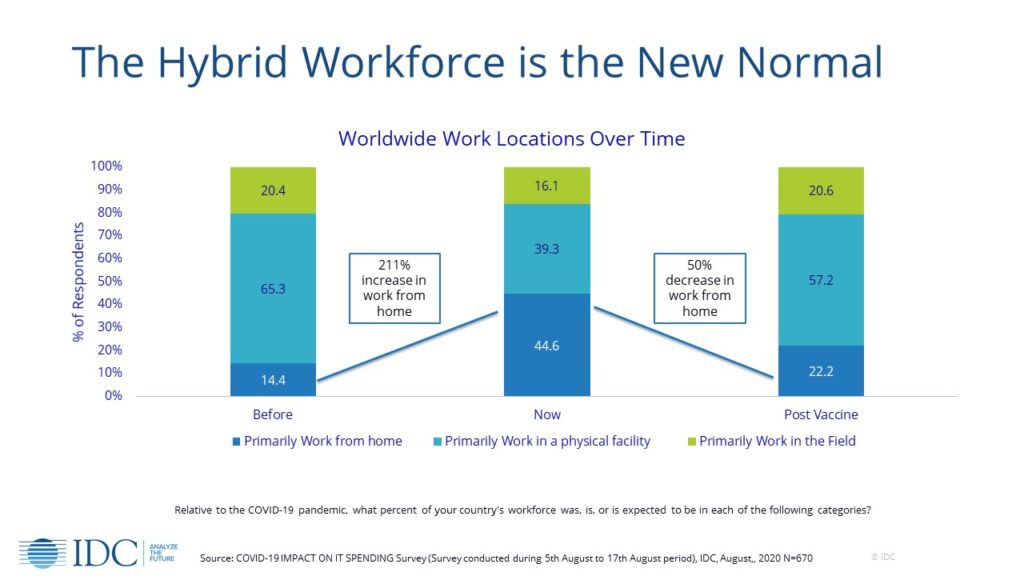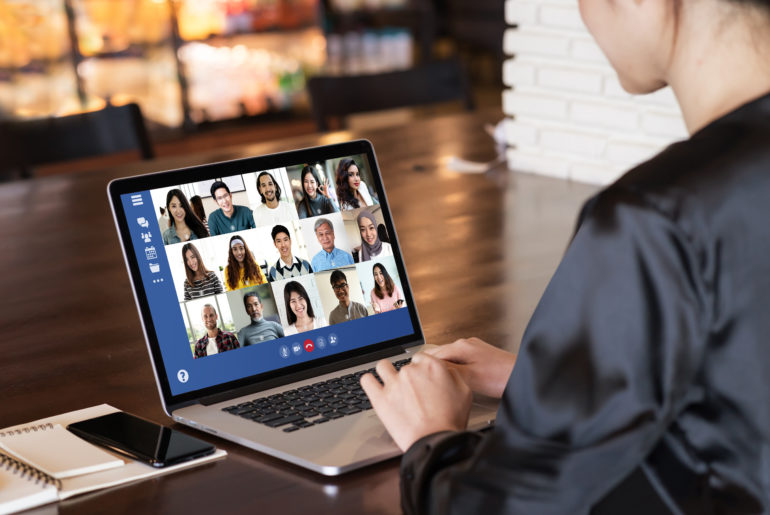Literally every day, the business news includes an article about a company bringing its employees back to corporate facilities or, quite the opposite, proclaiming that its workforce will be remote indefinitely. Recently we heard about one company, Dropbox, declaring itself to be “virtual first“, noting that “remote work will be the primary experience for all employees and the day-to-day default for individual work” while the company will leverage its existing real estate as collaborative spaces – which employees will not be allowed to use for solo work.
IDC research shows that while there is significant variability across regions (as well as industry and point in time) in terms of the number of workers who are remote versus in a company facility, the one thing that we can say definitively is that there is no turning back – we will not return to the remote work profile of 2019.

Not only will there be more individuals working from home offices and other remote locations, we will see more people moving between locations on a regular basis. Companies will provide greater flexibility to employees with care-giving or home-schooling responsibilities. Those with certain health needs may shy away from being on-site. Shift work may be implemented to minimize the number of people in a building at any one time. Or, like Dropbox, organizations may explicitly structure collaborative activities to be onsite while “solo work” is remote.
So, what does this mean from a technology perspective? Remote work can no longer be an afterthought. Rather, each “branch of one” must be fully supported as an official element of an organization’s infrastructure, processes, and policies. In IDC FutureScape: Worldwide Future of Work 2021 Predictions, we project that by 2023, 75% of the G2000 will make a commitment to providing technical parity to a workforce that is hybrid by design rather than by circumstance. We define “technology parity” as the requirement that all workers have secure access to the resources required to do their jobs no matter their preferred device or if they are local, remote, in the field, or switching between locations.
So, okay, they can get the job done. But parity must go beyond access and must also provide experience parity – meaning that all workers should have the same, consistent experience. Those people sitting in a conference room should have the same advantages (and disadvantages) as those at home. Security protocols should be the same, no matter where the individual is logging in from. And it goes without saying that network and computing resources should be equivalent.
Context must also be maintained. If someone shuts down their computer at home, and heads to the office the next day, they should be able to seamlessly pick up where they left off. Most importantly, workers must be able to collaborate. Successful companies will enable workers to “work together separately” and in real-time.
Is this vision realistic? There are a number of technology vendors who think it is. We are seeing the emergence of intelligent digital workspaces that will connect hybrid workers and a hybrid workplace. The workspace will provide a personalized and federated view of the resources that workers require to get their jobs done, including access to subject matter experts and other collaborators. This will extend to deskless or front-line workers, who are themselves digitally enabled “knowledge workers” and valuable touch points for the enterprise.
The same augmented reality (AR) that has already become a staple in social media will accelerate into business applications and expand how we visualize, manipulate and experience data. We will see virtualized conversations between people who are physically present and those who participate remotely, complete with their avatars sitting at the table. Teams will be able to come together and focus on a common project just as they would in person.
All of this was underway before the pandemic hit but has most definitely been accelerated. Successful organizations understand that the workforce of the not-too-distance future will be hybrid. Hybrid is a fact of the future enterprise. Those organizations that embrace this fact will be more resilient for sure, but will also have a more collaborative, informed, and productive workforce.




